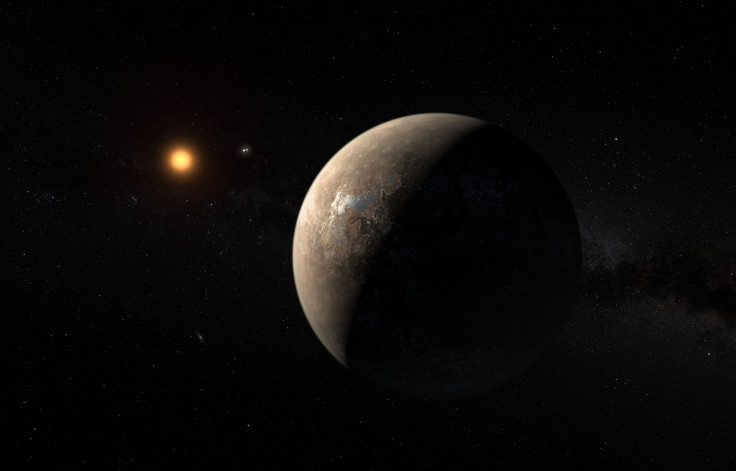Proxima B: Our closest neighbouring exoplanet could host 'alien life' climate models suggest
Climate simulations have revealed Proxima B could have liquid water on its surface.
Exoplanet Proxima B, which was recently discovered orbiting our closest neighbouring star, may have the potential to support life, new climate simulations have revealed.
Ever since it was identified in August 2016, Proxima B, which stands 4.2 light years away from Earth and close to the Proxima Centauri star, has intrigued scientists. The tantalising prospect that the planet could be habitable has led many to undertake in-depth investigations.
In a study now published in the journal Astronomy & Astrophysics, astrophysics and meteorology experts have worked hand in hand to explore the potential climate of Proxima B and to get a better idea of whether life could be possible on its surface.
Different scenarios
The scientists used the UK's Met office Unified Model, which has been used for years to study Earth's climate. They ran different simulations of the climate on Proxima B, if its atmosphere was similar to Earth's atmosphere.
They explored a number of scenarios, changing the planet's likely orbital configuration to see if this affected the way the climate behaved on Proxima B. The scientists examined what the effects on the climate would be if the planet was in a circular orbit and tidally-locked (with the same face of the planet always facing towards its star), or if it orbited eccentrically (along an ellipse) while rotating three times on its axis for every two orbits around the star (a phenomenon known as 3:2 resonance).

They find that regions of the planet would be able to host liquid water and potentially be habitable, both in the tidally-locked and eccentric 3:2 resonance configurations – although the latter is associated with more substantial areas of the planet falling within the right temperature range.
"Our model is better able to take into account the variations in radiation received by the planet due to its orbit than previous models. We find that in the right conditions, Proxima B could have liquid water on its surface and could be habitable. Our model does suffer from limitations, notably we have simply assumed that the planet has an earth-like atmosphere", Nathan Mayne told IBTimes UK.
"It's interesting for us to see that when we change a given parameter (over a reasonable range), the simulated climate and temperatures do not change that much. Proxima B could benefit from a remarkably stable climate regime".
An important future area of research will be to investigate the composition of Proxima B's atmosphere, as this could alter the current climate projections presented by scientists.
"Learning more about the composition of the exoplanet's atmosphere will be a crucial next step but we also want to learn about flare activity and how that interacts with the atmosphere. We are excited by the prospect of learning more about the climatic process happening on Proxima B - but we are not yet at the point where we can come up with a complete weather forecast", Mayne concluded.
© Copyright IBTimes 2025. All rights reserved.





















